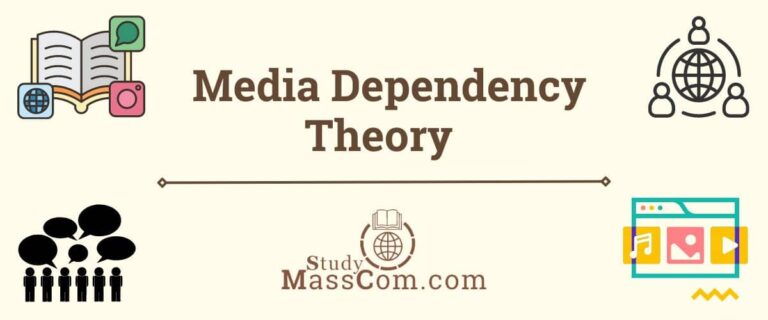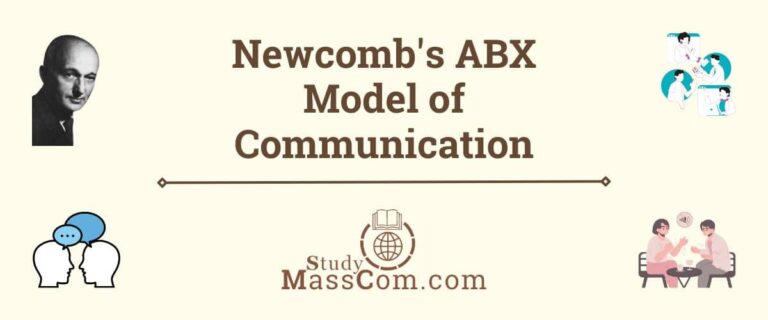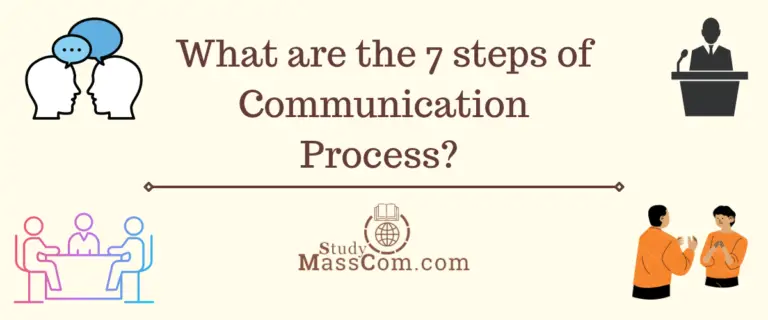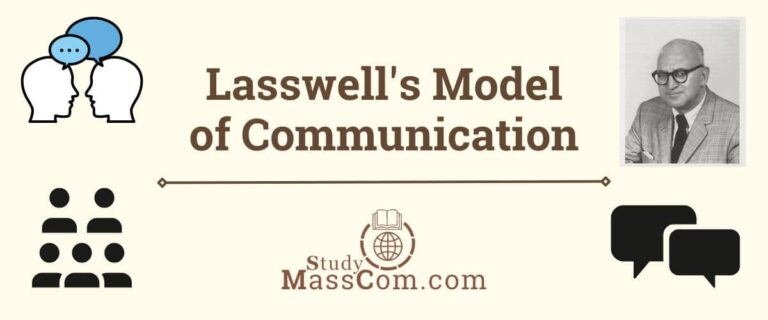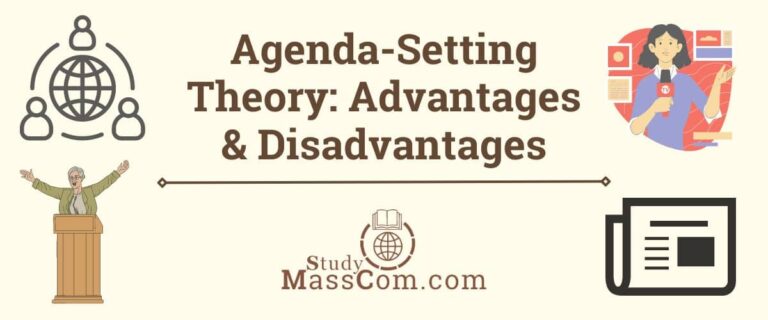Multi-Step Flow Theory: Definition & Examples
The Multi-Step Flow Theory is a prominent communication model that seeks to explain the intricate dynamics of information dissemination and influence within society. Developed as a response to the limited applicability of the Two-Step Flow Theory, this theory explores how information moves through various steps and intermediaries, affecting public opinion and decision-making. In this article, we delve into the history, key concepts, empirical studies, criticisms, and contemporary relevance of the Multi-Step Flow Theory. By examining its implications in the context of the digital age, we highlight the evolution of communication patterns and their impact on society’s attitudes and beliefs.

Multi-Step Flow Theory: Definition
The Multi-Step Flow Theory is a communication model that suggests information dissemination and influence occur through a multi-step process involving opinion leaders and opinion followers. According to this theory, information from mass media reaches opinion leaders first, who then interpret and filter it before passing it on to opinion followers through interpersonal communication. This theory emphasizes the crucial role of interpersonal communication in shaping public opinion and attitudes.
Origin of the Multi-Step Flow Theory
Communication is the lifeblood of any society, as it shapes our perceptions, beliefs, and actions. The dissemination of information and influence within society has been the subject of much research, leading to the development of several communication theories. One such theory that has garnered considerable attention is the Multi-Step Flow Theory.
The Multi-Step Flow Theory, also known as the multi-step flow of communication, was first proposed in the mid-20th century by sociologists Elihu Katz and Paul Lazarsfeld. It was developed in response to the limitations of the Two-Step Flow Theory, which suggested that information flowed directly from mass media to individuals through opinion leaders. However, Katz and Lazarsfeld observed that interpersonal communication played a more significant role in shaping opinions than previously thought, leading to the evolution of the Multi-Step Flow Theory.
Historical Background
Emergence of the Two-Step Flow Theory
To understand the Multi-Step Flow Theory fully, we must first examine its predecessor, the Two-Step Flow Theory. The Two-Step Flow Theory was formulated in the 1940s based on a study of the 1940 U.S. presidential election. It posited that mass media messages influenced opinion leaders who, in turn, shaped the opinions of the broader public. However, this one-step flow process was criticized for oversimplifying communication dynamics, prompting the need for a more comprehensive model.
Development of the Multi-Step Flow Theory
In the early 1950s, Elihu Katz and Paul Lazarsfeld conducted the Erie County Study, a groundbreaking research project that aimed to investigate media influence on voting behavior. Contrary to the assumptions of the Two-Step Flow Theory, their findings revealed that opinion leaders were not direct mediators of media messages. Instead, they acted as intermediaries between the media and the public, introducing a multi-step process of communication.
Key Concepts of the Multi-Step Flow Theory
Opinion Leaders
The concept of opinion leaders lies at the core of the Multi-Step Flow Theory. Opinion leaders are individuals who possess more significant expertise or influence in specific domains and actively engage in interpersonal communication with others. They play a pivotal role in mediating information between mass media and the general public.
Two-Step Flow Process
The Multi-Step Flow Theory proposes a multi-step flow process where information travels from media channels to opinion leaders and, subsequently, from opinion leaders to the broader public. This two-step process recognizes the significance of face-to-face communication in shaping attitudes and opinions.
Selective Exposure
Selective exposure is a crucial aspect of the Multi-Step Flow Theory, suggesting that individuals actively seek information that aligns with their existing beliefs and values. Opinion leaders act as filters in this process, influencing the type of information that reaches the masses.
Explore the differences between Two-Step Flow Theory and Multi-Step Flow Theory.
Empirical Studies and Findings
Over the years, several empirical studies have been conducted to test the validity of the Multi-Step Flow Theory and explore its implications in various contexts. Some noteworthy findings include:
The Decatur Study
One of the earliest and most influential studies in support of the Multi-Step Flow Theory was the Decatur Study (1953). The study examined the flow of communication regarding controversial political issues in the city of Decatur, Illinois. It found that opinion leaders played a significant role in shaping public opinion, acting as intermediaries between the media and the general public.
Diffusion of Innovations
Rogers’ Diffusion of Innovations theory, based partly on the Multi-Step Flow Theory, explored the spread of innovations within a social system. It emphasized the role of opinion leaders in accelerating or hindering the adoption of new ideas.
Contemporary Studies in the Digital Age
With the advent of the internet and social media, the dynamics of communication have undergone significant changes. Contemporary studies have examined how the Multi-Step Flow Theory applies to online networks and the role of digital opinion leaders in shaping online discourse.
Criticisms of the Multi-Step Flow Theory
Oversimplification of the Communication Process
Critics argue that the Multi-Step Flow Theory oversimplifies the complexities of communication by focusing primarily on the role of opinion leaders. The model fails to consider other factors that influence information dissemination, such as social networks, cultural context, and individual agency.
Limited Generalizability
Some researchers have questioned the generalizability of the Multi-Step Flow Theory across different cultures and social contexts. Cultural variations in communication patterns and the influence of opinion leaders need to be considered for a more comprehensive understanding.
Neglecting Two-Way Communication
The Multi-Step Flow Theory predominantly emphasizes one-way communication from opinion leaders to the public, neglecting the significance of two-way communication and feedback loops between individuals.
Multi-Step Flow Theory in the Digital Age
Social Media and Digital Opinion Leaders
The rise of social media platforms has enabled the emergence of digital opinion leaders who wield substantial influence over their followers. These influencers can accelerate the spread of information and shape public opinion on various topics.
Filter Bubbles and Echo Chambers
Selective exposure takes on new dimensions in the digital age, as algorithms and personalized content recommendations create filter bubbles and echo chambers, reinforcing individuals’ existing beliefs and limiting exposure to diverse viewpoints.
Misinformation and Disinformation
The rapid dissemination of information through digital channels has also led to the proliferation of misinformation and disinformation. Understanding the role of opinion leaders in propagating false information is crucial in tackling this issue.
Explore more about digital literacy and media literacy.
Examples of the Multi-Step Flow Theory
The following examples illustrate how the Multi-Step Flow Theory remains relevant across various domains, emphasizing the importance of opinion leaders and interpersonal communication in influencing public opinion and behavior.
Political Campaigns
During political campaigns, candidates often seek to influence voters’ opinions and behaviors through various channels, including mass media and social media. Opinion leaders, such as political pundits, community leaders, and influential individuals, play a significant role in interpreting and disseminating information about candidates and their policies to their followers. These followers, in turn, may engage in discussions with their peers, leading to a cascade of influence that can sway public opinion and voting decisions.
Product Recommendations
In the context of consumer behavior, the Multi-Step Flow Theory is observed in product recommendations. Opinion leaders, such as celebrities, influencers, or experts in a particular field, can impact consumer choices by endorsing or reviewing products. Consumers who trust and follow these opinion leaders are more likely to adopt their recommendations, leading to the spread of information and influencing the purchasing decisions of their social circles.
Health Campaigns
Public health campaigns often rely on opinion leaders, such as healthcare professionals, community leaders, or celebrities, to promote health-related information and behavioral changes. These opinion leaders help in disseminating health messages and encouraging healthy practices within their social networks. The Multi-Step Flow Theory is evident in the way health-related information travels from experts to opinion followers and further influences behavior and attitudes toward health issues.
Social Movements
In the context of social movements and activism, opinion leaders play a crucial role in mobilizing support and spreading awareness. Activists, influencers, or prominent figures championing a cause can use their platforms to raise awareness, engage in discussions, and motivate others to join the movement. Through the multi-step flow process, the message spreads from opinion leaders to the broader public, creating a ripple effect of engagement and support.
Online Information Sharing
With the rise of social media and digital communication, the Multi-Step Flow Theory finds new expressions in online information sharing. Content creators, online influencers, and thought leaders act as modern opinion leaders in digital spaces. Information shared by these individuals can quickly reach a vast audience as their followers interact with and share the content within their networks.
Conclusion
The Multi-Step Flow Theory has significantly contributed to our understanding of communication influence in society. By highlighting the role of opinion leaders and interpersonal communication, this model offers valuable insights into how information spreads and shapes attitudes. However, it is essential to recognize the theory’s limitations and adapt its principles to the ever-evolving digital landscape. As technology continues to transform communication patterns, a deeper understanding of the Multi-Step Flow Theory’s contemporary relevance will help us navigate the complexities of information dissemination in the digital age.
FAQs
The Multi-Step Flow Theory is a communication model that explains how information and influence spread through society. According to this theory, information from mass media reaches opinion leaders first, who then interpret and transmit it to opinion followers through interpersonal communication. The opinion followers, in turn, share this information within their social networks. This multi-step process highlights the crucial role of opinion leaders in shaping public opinion and attitudes, as well as the significance of face-to-face communication in the dissemination of information and influence.
The Multi-Step Flow Theory was developed by sociologists Elihu Katz and Paul Lazarsfeld in the 1950s. They proposed this theory as an advancement of the earlier Two-Step Flow Theory, which suggested that information flowed directly from mass media to opinion leaders and then to the broader public. However, Katz and Lazarsfeld’s empirical research, particularly the Erie County Study, revealed that opinion leaders were not simple mediators but played a more complex role in shaping public opinion. Their work led to the formulation of the Multi-Step Flow Theory, which emphasized the significance of interpersonal communication and opinion leaders in the diffusion of information and influence.
The Multi-Step Flow Theory is a communication model that explains the process of information diffusion and influence within society. According to this theory, information from mass media does not directly reach the general public. Instead, it first passes through opinion leaders, individuals who have a higher degree of influence and actively engage in interpersonal communication. These opinion leaders interpret and filter the information before disseminating it to opinion followers. The information then spreads further through interpersonal communication within social networks. The theory highlights the importance of opinion leaders and face-to-face communication in shaping public opinion and attitudes.

